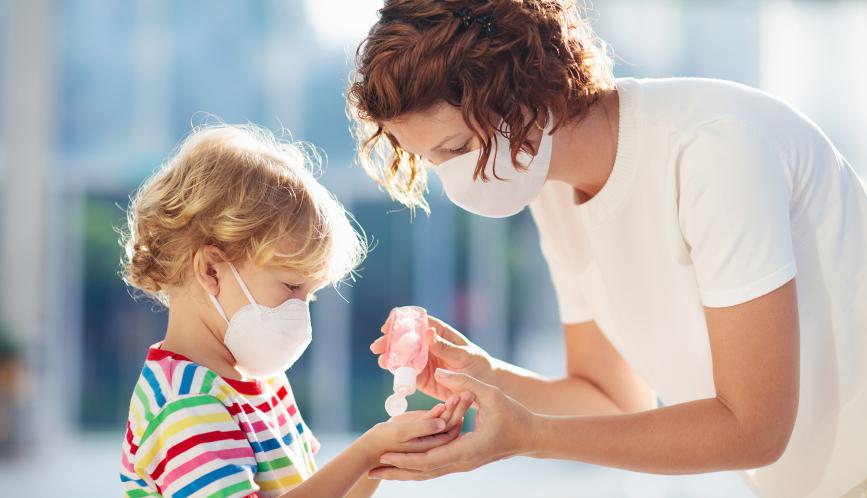Since the coronavirus pandemic was first reported in the UK earlier this year, many reports have covered the negative impact on the economy. In August, the Office of National Statistics reported that monthly gross domestic product that month was 9.2% below the level of February 2020, and that business activity across industries remained below normal. With the UK, like many other nations, now experiencing a second-wave of COVID-19—new cases have been on an upward trend since September—it is clear that the pandemic will continue to affect lives and livelihoods into the foreseeable future.
In a recent HCEO working paper, FI network members Sonia Oreffice and Climent Quintana-Domeque explore whether and to what extent mental well-being, perceptions, and behavior differ by gender three months into lockdown. “Women represent half of the population, they are key to family structure and early human capital accumulation, and they are more vulnerable to domestic violence, poverty, and single parenthood,” the authors write. Thus, the gender dimensions of the pandemic and subsequent lockdown are important to understand.
In June 2020, the authors surveyed approximately 1,500 individuals, who were representative of the UK population with regards to age, sex, and ethnicity. There were two main dimensions to the survey, with some questions focusing on that particular moment in time, and some questions on both that particular moment in time and the time just before the pandemic.
“Then we have a comparison, before and after,” Quintana-Domeque says. “This is important because some of the findings are basically telling us there is a gap–let’s say between men and women—but, of course, we don’t know if the gap existed before. We can immediately see how their answers change between February 2020 and June 2020.”
The results by and large show that gender inequality is widening as a result of the COVID-19 pandemic. Women have decreased their work hours by fifty percent, but increased time spent on housework and childcare (by 48 percent and 195 percent, respectively), compared to men. They are also more likely to have lost their job since the start of the pandemic. Moreover, the authors note, “these gender-specific patterns are not driven by differences in age, ethnicity, education, family structure, income in 2019, place of residence, or living in a rural/urban area.”
The point in time results show that women’s mental health in mid-June was worse than men’s along several dimensions: generalized anxiety disorder, depression, anxiety attacks, and loneliness. These gaps are significant; women were 81 percent more likely to report having an anxiety attack in the prior two weeks and were 22 percent more likely to report feeling depressed compared to men.
Women were more concerned about “getting and spreading the virus (12% and 8% higher than men, respectively),” and perceived the virus as more prevalent and lethal than men. Women do tend to work in sectors more likely to be affected by COVID-19, and are more likely to be employed by the National Health Service, which may be related. “This is something that we haven’t explored yet but it could be behind the fact that we also observe that women tend to be more concerned about the coronavirus than men,” Quintana-Domeque says.
Women are also more pessimistic about the UK economy. Female respondents were more likely to predict a higher unemployment rate at present, in six months, and in twelve months. “What we observe is that women systematically tell us that the unemployment rate they forecast is worse than that for men. So, along all dimensions, it seems like they are concerned not just about the health risks of COVID, but also about the impact on the economy, so I think that’s something interesting,” Quintana-Domeque says. Perhaps relatedly, women were more likely to donate to food banks than men.
Overall the findings in this paper raise critical issues for policymakers working to ease the impacts of the pandemic. “The gender gaps after three months of lockdown that we document in this paper are worrisome for the whole UK economy,” the authors write. “Our findings point to substantial gender differences in vulnerability to the pandemic and to the need for pandemic-related health policies to take gender into account, and for the government to devise stimulus policies that consider women's difficulties and channels to improve their mental and economic wellbeing.”
These findings are echoed in other emerging research. A recent report from the United Nations states that women represent 70 percent of the health and social sector workforce globally and that their participation in care work puts them at a higher risk of exposure. “Even the limited gains made in the past decades are at risk of being rolled back,” the report states. A paper by Alon et al. finds that this downturn distinguishes itself from other recent recessions with its impact on women’s employment, and stresses that “accounting for family behavior and gender differences should be a central element of research on economic fluctuations.”
“I think that that’s kind of one of the main takeaways of the research. Making sure that we understand that the gaps are there, and some of these gaps are created by COVID or exacerbated by COVID. COVID is making things much more difficult, and in particular among women,” Quintana-Domeque says. “This is a wake up call to say, ‘Look, there is an effect here which is gender specific and we need to be very careful because the progress that has been made during these years can basically disappear from one day to another.’”



